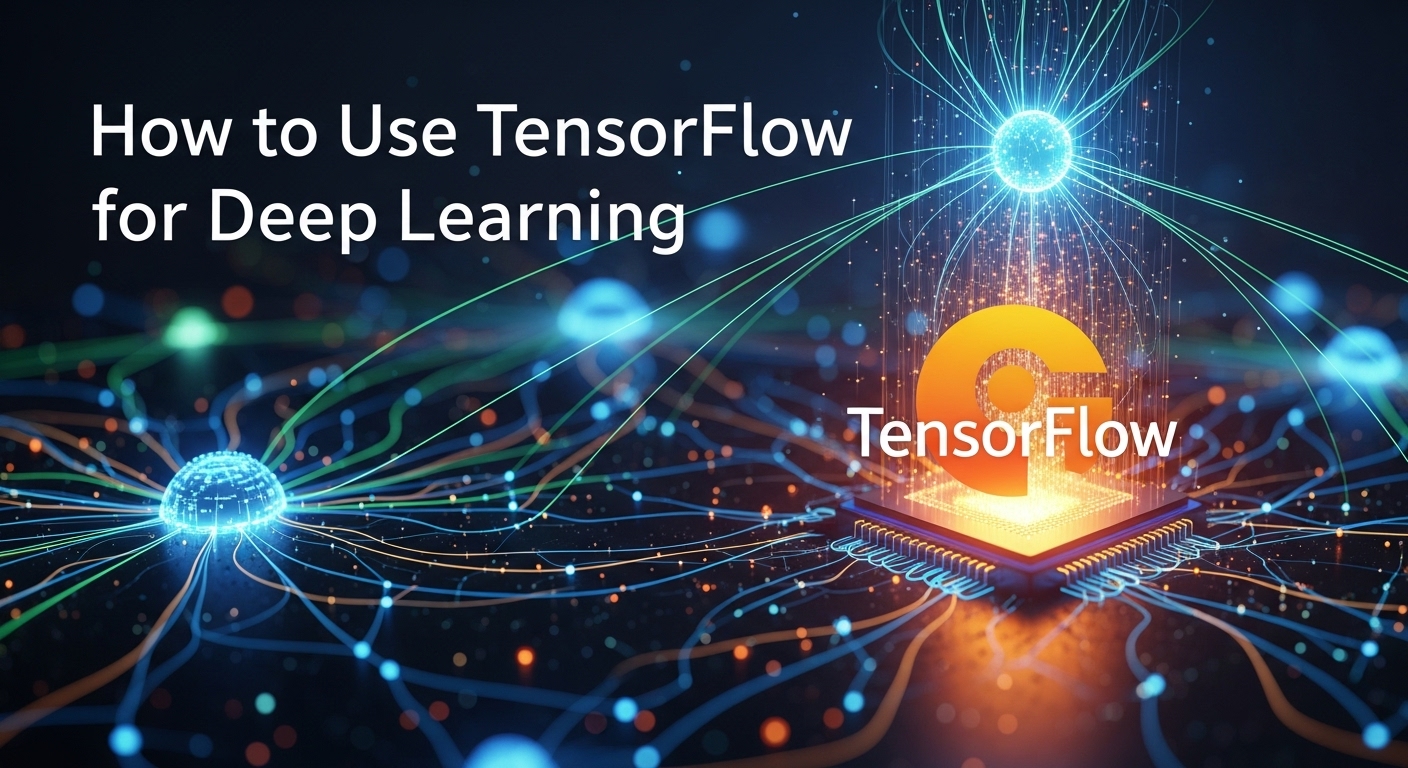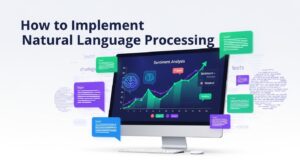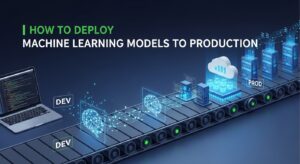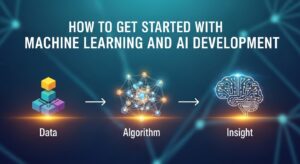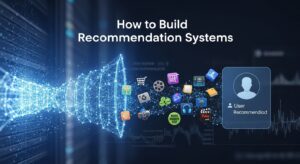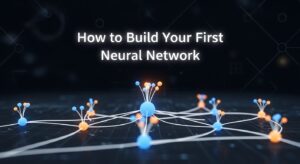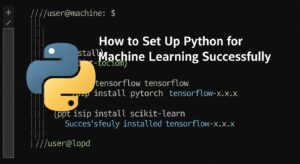TensorFlow deep learning has revolutionized how developers and data scientists approach artificial intelligence. As Google’s open-source machine learning framework, TensorFlow provides the tools needed to build sophisticated neural networks that can solve complex problems across industries.
Whether you’re a beginner stepping into the world of AI or an experienced programmer looking to expand your skillset, this comprehensive guide will walk you through everything you need to know about using TensorFlow for deep learning projects.
What is TensorFlow Deep Learning?
TensorFlow deep learning combines Google’s robust computational framework with advanced neural network architectures. Unlike traditional programming where you write explicit instructions, TensorFlow deep learning allows you to create systems that learn patterns from data automatically.
The framework excels at handling large datasets and complex mathematical operations through its efficient computation graph system. This makes it ideal for tasks like image recognition, natural language processing, and predictive analytics.
Key Advantages of TensorFlow
- Scalability: Runs on everything from mobile devices to distributed systems
- Flexibility: Supports multiple programming languages and deployment options
- Community: Extensive documentation and active developer community
- Performance: Optimized for both CPU and GPU computation
Setting Up Your TensorFlow Deep Learning Environment
Before diving into TensorFlow deep learning projects, you need a properly configured development environment. This foundation will determine your success with more advanced concepts.
Installation Requirements
Start by installing Python 3.7 or higher on your system. TensorFlow works best with recent Python versions that support modern machine learning libraries.
pip install tensorflow
pip install numpy matplotlib pandas scikit-learn
For GPU acceleration, install TensorFlow GPU if you have compatible NVIDIA hardware:
pip install tensorflow-gpu
Verification Setup
Test your installation with this simple verification script:
import tensorflow as tf
print("TensorFlow version:", tf.__version__)
print("GPU Available:", tf.config.list_physical_devices('GPU'))
Core TensorFlow Deep Learning Concepts
Understanding fundamental concepts is crucial for effective TensorFlow deep learning implementation. These building blocks form the foundation of every neural network you’ll create.
Tensors and Data Flow
Tensors are multi-dimensional arrays that carry data through your neural network. Think of them as containers that hold numerical information in various shapes and sizes.
Tensor Type | Description | Common Use |
0-D Tensor | Scalar value | Single predictions |
1-D Tensor | Vector | Feature lists |
2-D Tensor | Matrix | Tabular data |
3-D Tensor | Cube | Image data |
4-D Tensor | Hypercube | Batch of images |
Computational Graphs
TensorFlow deep learning operates through computational graphs where nodes represent operations and edges represent data flow. This architecture enables automatic differentiation and efficient parallel processing.
The framework builds these graphs automatically as you define your model architecture, optimizing the computation path for maximum performance.
Building Your First Neural Network
Creating your first TensorFlow deep learning model involves several key steps. We’ll build a simple neural network to classify handwritten digits from the MNIST dataset.
Data Preparation
import tensorflow as tf
from tensorflow import keras
# Load and preprocess data
(x_train, y_train), (x_test, y_test) = keras.datasets.mnist.load_data()
x_train, x_test = x_train / 255.0, x_test / 255.0
Data preprocessing normalizes pixel values between 0 and 1, helping the neural network learn more effectively.
Model Architecture
model = keras.Sequential([
keras.layers.Flatten(input_shape=(28, 28)),
keras.layers.Dense(128, activation='relu'),
keras.layers.Dropout(0.2),
keras.layers.Dense(10, activation='softmax')
])
This architecture includes:
- Flatten layer: Converts 2D images to 1D vectors
- Dense layer: Fully connected layer with ReLU activation
- Dropout layer: Prevents overfitting during training
- Output layer: 10 neurons for digit classification
Model Compilation and Training
model.compile(optimizer='adam',
loss='sparse_categorical_crossentropy',
metrics=['accuracy'])
model.fit(x_train, y_train, epochs=5, validation_split=0.1)
The Adam optimizer efficiently adjusts weights during training, while sparse categorical crossentropy handles multi-class classification problems.
Advanced TensorFlow Deep Learning Techniques
Once you’ve mastered basic neural networks, TensorFlow deep learning offers sophisticated architectures for specialized tasks.
Convolutional Neural Networks (CNNs)
CNNs excel at image processing tasks by detecting spatial patterns through convolutional layers:
cnn_model = keras.Sequential([
keras.layers.Conv2D(32, (3, 3), activation='relu', input_shape=(28, 28, 1)),
keras.layers.MaxPooling2D((2, 2)),
keras.layers.Conv2D(64, (3, 3), activation='relu'),
keras.layers.MaxPooling2D((2, 2)),
keras.layers.Flatten(),
keras.layers.Dense(64, activation='relu'),
keras.layers.Dense(10, activation='softmax')
])
This CNN architecture progressively reduces spatial dimensions while increasing feature depth, enabling sophisticated pattern recognition.
Recurrent Neural Networks (RNNs)
For sequential data like text or time series, RNNs maintain memory of previous inputs:
rnn_model = keras.Sequential([
keras.layers.LSTM(50, return_sequences=True, input_shape=(timesteps, features)),
keras.layers.LSTM(50),
keras.layers.Dense(1, activation='linear')
])
LSTM layers handle long-term dependencies in sequential data, making them perfect for natural language processing and forecasting applications.
Transfer Learning with TensorFlow
Transfer learning accelerates TensorFlow deep learning projects by leveraging pre-trained models. This technique is especially powerful when working with limited datasets.
Using Pre-trained Models
base_model = keras.applications.VGG16(
weights='imagenet',
include_top=False,
input_shape=(224, 224, 3)
)
base_model.trainable = False
model = keras.Sequential([
base_model,
keras.layers.GlobalAveragePooling2D(),
keras.layers.Dense(128, activation='relu'),
keras.layers.Dense(num_classes, activation='softmax')
])
This approach uses VGG16’s learned features while training only the final classification layers on your specific dataset.
Fine-tuning Strategies
Fine-tuning involves unfreezing some layers of the pre-trained model and training them with a very low learning rate:
base_model.trainable = True
model.compile(optimizer=keras.optimizers.Adam(1e-5),
loss='categorical_crossentropy',
metrics=['accuracy'])
Start with a lower learning rate to prevent destroying the useful features learned during pre-training.
Model Training and Optimization
Effective TensorFlow deep learning requires careful attention to training strategies and hyperparameter optimization.
Training Callbacks
Callbacks enhance training by providing automated responses to training events:
callbacks = [
keras.callbacks.EarlyStopping(patience=5, restore_best_weights=True),
keras.callbacks.ReduceLROnPlateau(factor=0.5, patience=3),
keras.callbacks.ModelCheckpoint('best_model.h5', save_best_only=True)
]
model.fit(x_train, y_train,
epochs=50,
validation_data=(x_val, y_val),
callbacks=callbacks)
These callbacks prevent overfitting, adjust learning rates dynamically, and save your best model automatically.
Hyperparameter Tuning
Parameter | Impact | Typical Range |
Learning Rate | Training speed and convergence | 0.001 – 0.1 |
Batch Size | Memory usage and stability | 16 – 512 |
Hidden Units | Model capacity | 64 – 1024 |
Dropout Rate | Regularization strength | 0.1 – 0.5 |
Systematic hyperparameter tuning often yields significant performance improvements in TensorFlow deep learning models.
Handling Real-World Data Challenges
Production TensorFlow deep learning applications face various data quality issues that require specialized handling techniques.
Data Augmentation
Increase dataset diversity without collecting more samples:
data_augmentation = keras.Sequential([
keras.layers.RandomFlip("horizontal"),
keras.layers.RandomRotation(0.1),
keras.layers.RandomZoom(0.1),
])
Data augmentation creates variations of existing samples, improving model generalization and reducing overfitting.
Dealing with Imbalanced Datasets
Class imbalance affects many real-world datasets. Address this through:
- Class weights: Penalize mistakes on minority classes more heavily
- Sampling techniques: Oversample minority classes or undersample majority classes
- Custom loss functions: Design loss functions that account for class distribution
Handling Missing Data
Real datasets often contain missing values. TensorFlow deep learning models require complete data, so implement strategies like:
- Mean/median imputation for numerical features
- Mode imputation for categorical features
- Advanced techniques like iterative imputation for complex patterns
Model Evaluation and Validation
Proper evaluation ensures your TensorFlow deep learning models perform reliably on unseen data.
Cross-Validation Strategies
from sklearn.model_selection import KFold
kfold = KFold(n_splits=5, shuffle=True, random_state=42)
cv_scores = []
for train_idx, val_idx in kfold.split(X):
model = create_model()
model.fit(X[train_idx], y[train_idx], epochs=10, verbose=0)
score = model.evaluate(X[val_idx], y[val_idx], verbose=0)
cv_scores.append(score[1])
Cross-validation provides robust performance estimates by training and testing on different data splits.
Performance Metrics
Different TensorFlow deep learning tasks require appropriate evaluation metrics:
- Classification: Accuracy, precision, recall, F1-score
- Regression: Mean squared error, mean absolute error, R-squared
- Object Detection: Intersection over Union (IoU), Average Precision
Monitor multiple metrics to get a complete picture of model performance.
Deployment and Production Considerations
Moving TensorFlow deep learning models from development to production requires careful planning and optimization.
Model Optimization
TensorFlow Lite converts models for mobile and edge deployment:
converter = tf.lite.TFLiteConverter.from_keras_model(model)
converter.optimizations = [tf.lite.Optimize.DEFAULT]
tflite_model = converter.convert()
This optimization reduces model size and inference time while maintaining acceptable accuracy.
Serving Models
TensorFlow Serving provides robust model deployment for production environments. It handles versioning, batching, and scaling automatically.
Consider these deployment options:
- REST API: Simple HTTP endpoints for web applications
- gRPC: High-performance serving for low-latency applications
- TensorFlow.js: Browser-based deployment for client-side inference
Common Pitfalls and Solutions
Even experienced developers encounter challenges when working with TensorFlow deep learning. Here are solutions to frequent issues:
Overfitting Prevention
Overfitting occurs when models memorize training data instead of learning generalizable patterns. Combat this through:
- Regularization techniques (L1, L2, dropout)
- Early stopping based on validation performance
- Data augmentation to increase sample diversity
Training Instability
Unstable training manifests as fluctuating loss values or poor convergence. Address instability by:
- Reducing learning rates
- Implementing gradient clipping
- Using batch normalization layers
- Checking data preprocessing steps
Memory Issues
Large TensorFlow deep learning models can exhaust system memory. Manage resources through:
- Batch size reduction
- Model parallelism across multiple GPUs
- Gradient accumulation for effective large batch training
Future Trends in TensorFlow Deep Learning
The field continues evolving rapidly with new architectures and techniques emerging regularly.
- Transformer Networks: Attention mechanisms have transformed natural language processing and are expanding into computer vision applications. TensorFlow provides excellent support for transformer architectures through high-level APIs.
- AutoML Integration: Automated machine learning reduces the expertise barrier for TensorFlow deep learning by automatically designing architectures and tuning hyperparameters.
- Edge Computing: TensorFlow Lite and TensorFlow.js enable deployment on resource-constrained devices, bringing deep learning capabilities directly to users without cloud dependency.
Getting Started Today
Begin your TensorFlow deep learning journey by following these practical steps:
- Install TensorFlow and verify your setup works correctly
- Complete tutorials from the official TensorFlow documentation
- Practice with datasets like MNIST, CIFAR-10, or your own data
- Join communities on platforms like Stack Overflow and Reddit
- Read research papers to stay current with latest developments
Essential Resources for Continued Learning
Expand your TensorFlow deep learning expertise through these valuable resources:
- Official TensorFlow Documentation: tensorflow.org
- TensorFlow Tutorials: tensorflow.org/tutorials
- Coursera Deep Learning Specialization: Comprehensive courses by Andrew Ng
- Papers With Code: paperswithcode.com for latest research implementations
Conclusion
TensorFlow deep learning opens unlimited possibilities for solving complex problems through artificial intelligence. The framework’s combination of flexibility, performance, and ecosystem support makes it an excellent choice for both learning and production applications.
Start with simple projects and gradually increase complexity as your understanding grows. The key to mastering TensorFlow deep learning lies in consistent practice and experimentation with different architectures and datasets.
Remember that deep learning is as much art as science. Each project teaches valuable lessons that improve your intuition for designing effective neural networks. With dedication and the right resources, you’ll soon be building sophisticated AI systems that make real-world impact.

